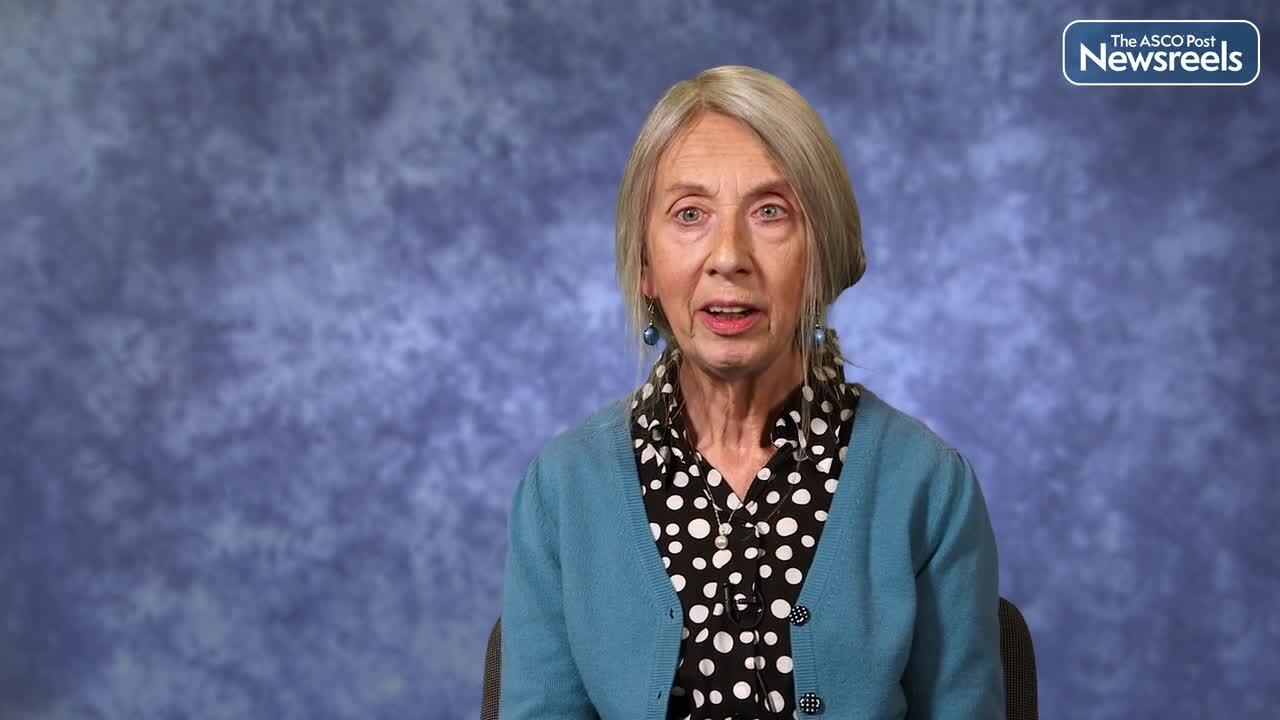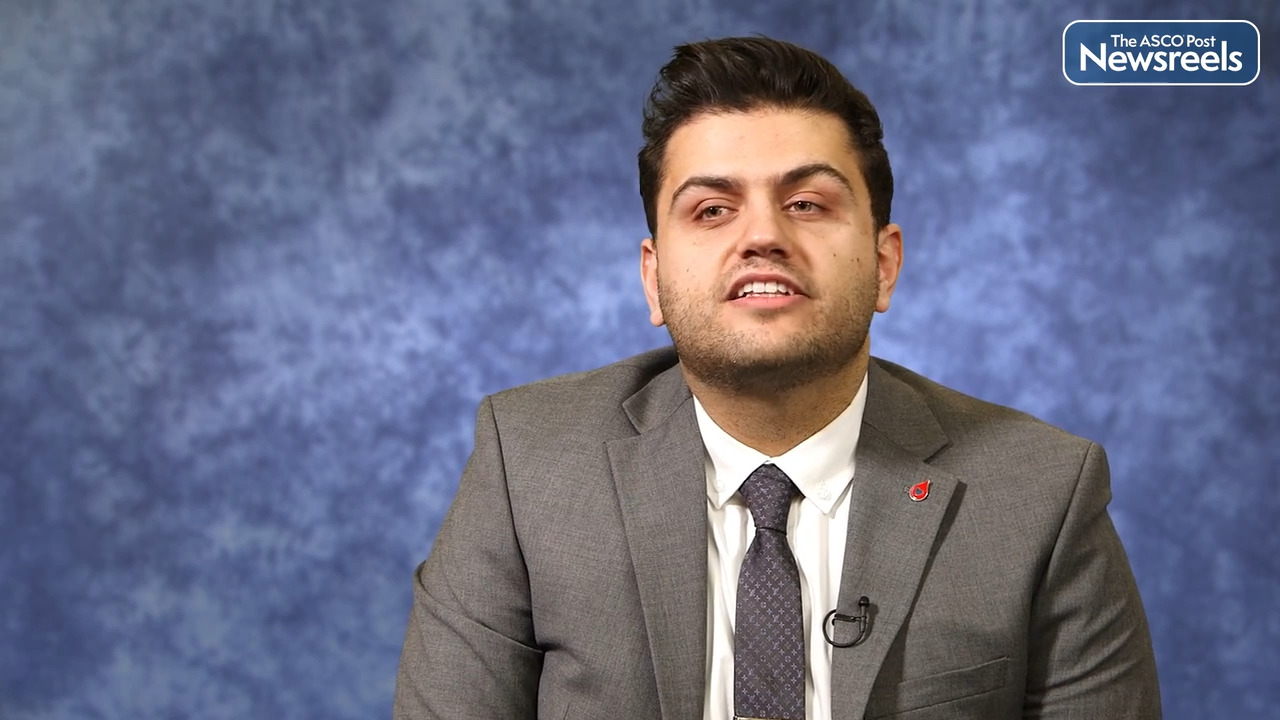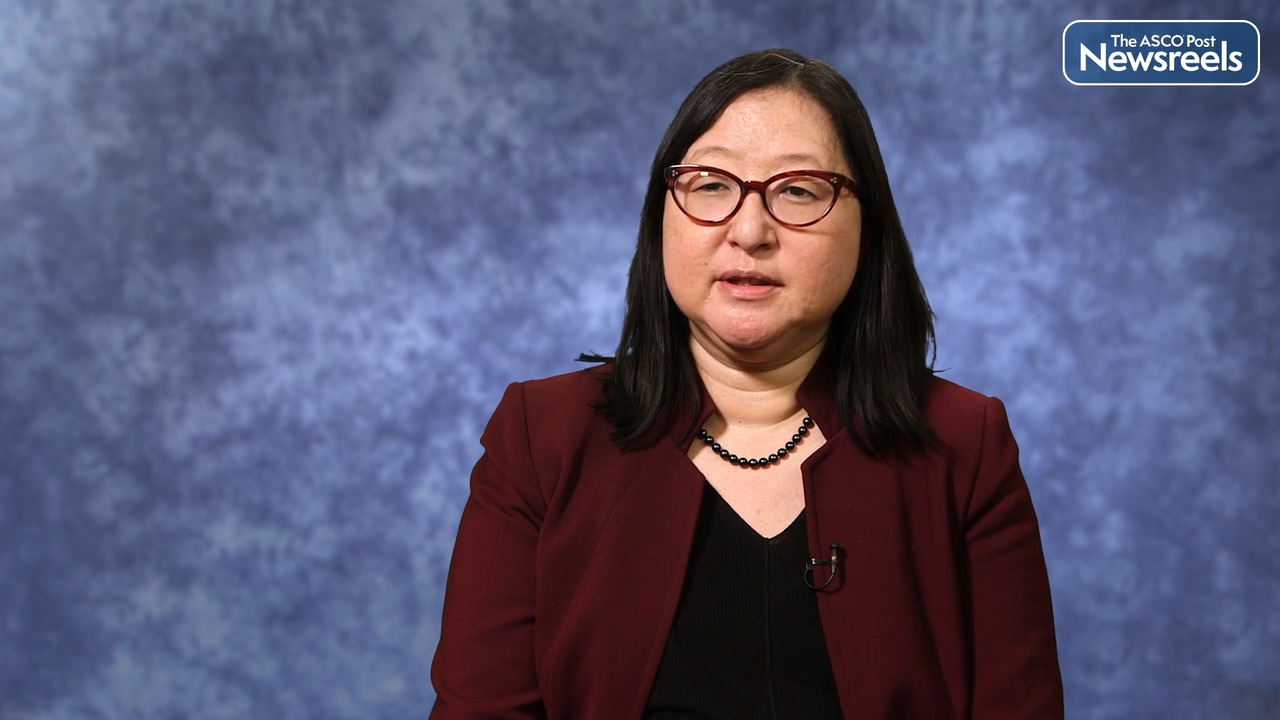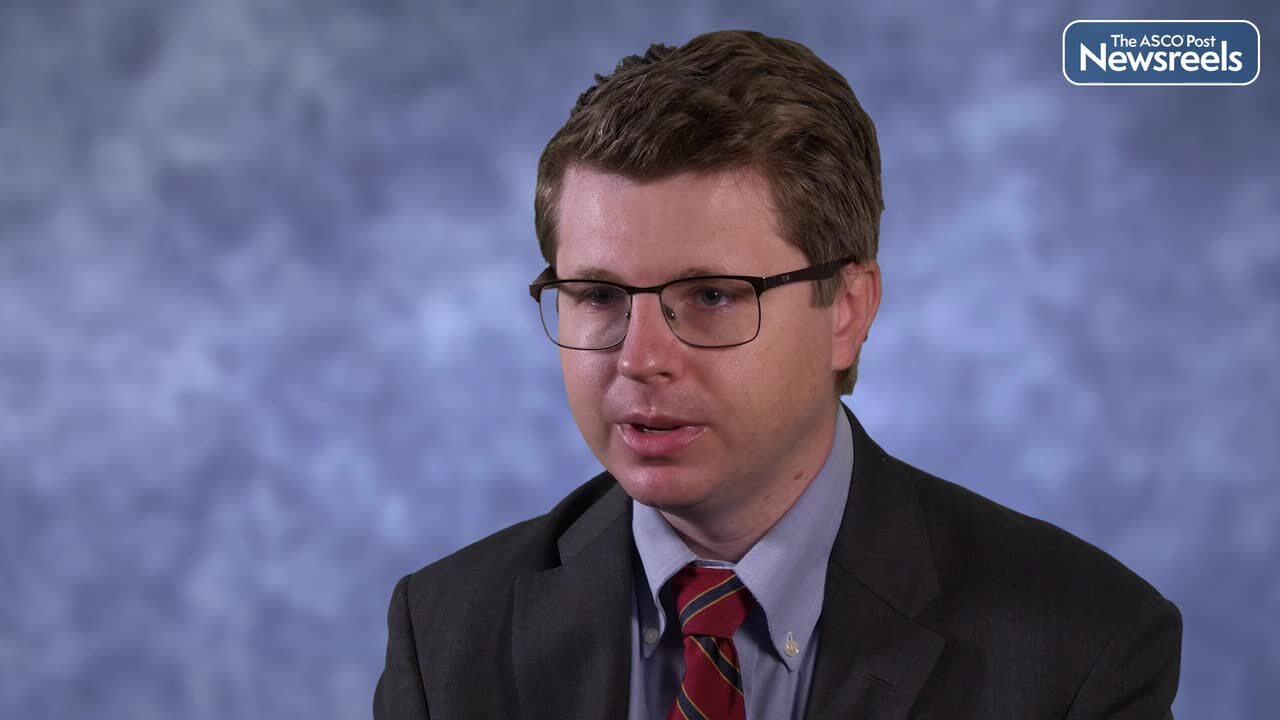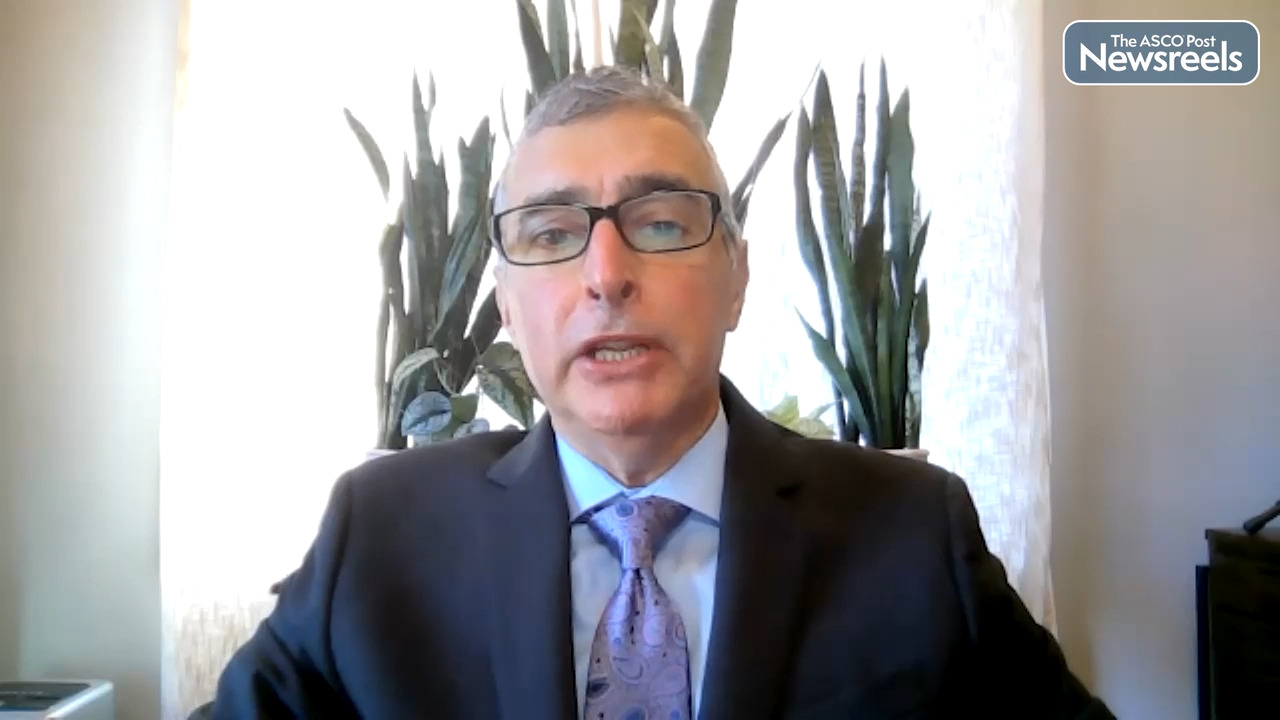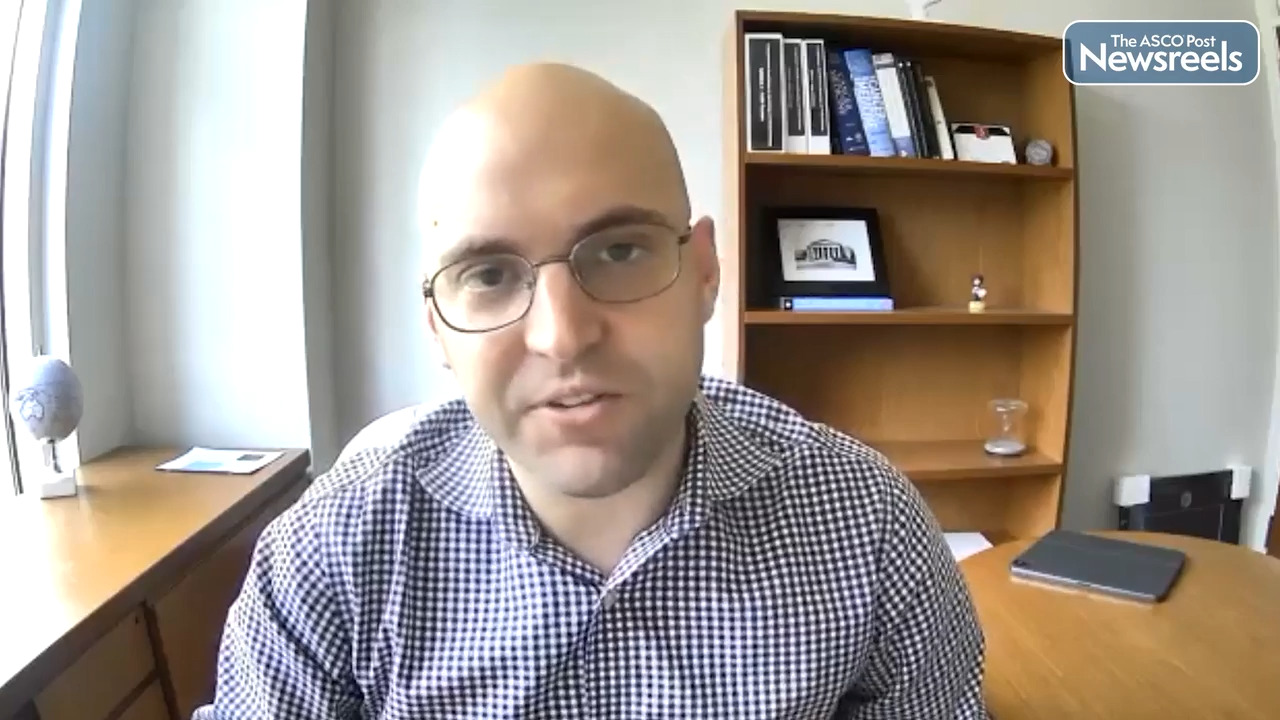Three-Drug Combination Therapy May Be Effective in Patients With High-Risk CLL
A three-drug combination that showed success at sending patients with chronic lymphocytic leukemia (CLL) into deep remissions in a clinical trial may be effective at treating patients with high-risk types of the disease, according to new findings presented by Ryan et al at the 2022 American Society ...
Global Study Uncovers Regional Differences in the Use of Curative Transplants for Patients With AML
The use of stem cell transplantation for acute myeloid leukemia increased by about 55% worldwide from 2009 to 2016, according to new findings presented by Niederweiser et al at the 64th American Society of Hematology (ASH) Annual Meeting and Exposition (Abstract 3638). Although the largest...
Irene Roberts, MD, on Leukemogenesis in Infants With Trisomy 21
Irene Roberts, MD, of Oxford’s Weatherall Institute of Molecular Medicine, discusses children with Down syndrome, who have a more than 100-fold increased risk of developing acute myeloid leukemia before their fourth birthday compared to children without Down syndrome. Their risk of acute lymphoblastic leukemia is also increased by around 30-fold. Dr. Roberts details current knowledge about the biologic and molecular basis of this relationship between leukemia and Down syndrome, the role of trisomy 21 in leukemogenesis, and the clinical implications of these findings.
Abdul Rahman Al Armashi, MD, on AML: Racial Disparities in Mortality Trends
Abdul Rahman Al Armashi, MD, of Seidman Cancer Center, Case Western University, University Hospitals Cleveland Medical Center, discusses a retrospective analysis, using a CDC database, in one of the largest subgroup-based racial population studies analyzing mortality trends in patients with acute myeloid leukemia (AML). Between 2000 and 2019, AML mortality was the highest in Whites and the lowest in American Indians or Alaska Natives. The highest rate of increase in mortality was seen in Asians or Pacific Islanders. Dr. Al Armashi talks about the many variables that might contribute to these inequalities (Abstract 600).
Anand P. Jillella, MD, on Acute Promyelocytic Leukemia: A Simplified Patient Care Strategy to Decrease Early Deaths
Anand P. Jillella, MD, of Georgia Cancer Center at Augusta University, discusses results from the ECOG-ACRIN EA9131 Trial, which showed that using a simplified treatment algorithm and management recommendations made by a group of specialists, resulted in a dramatic improvement in 1-year survival of patients with acute promyelocytic leukemia (Abstract 421).
Andrew Matthews, MD, on AML: Real-World Effectiveness of 7 + 3 Intensive Chemotherapy vs Venetoclax and a Hypomethylating Agent
Andrew Matthews, MD, of the Abramson Cancer Center, University of Pennsylvania, discusses findings from a large, multicenter study that showed superior outcomes with 7 + 3 chemotherapy (cytarabine continuously for 7 days, along with short infusions of an anthracycline on each of the first 3 days) vs venetoclax in patients with acute myeloid leukemia (AML). In this real-world data set, the 7 + 3 cohort outperformed historical benchmarks in overall survival and early mortality, perhaps reflecting improved later lines of therapy and patient selection. Prospective studies (such as NCT04801797) must confirm the superiority of intensive chemotherapy (Abstract 426).
Report Outlines Advance in Retreatment With CAR T-Cell Therapy in Patients With Relapsed or Refractory Non-Hodgkin Lymphoma or CLL
Researchers from the University of Pennsylvania’s Abramson Cancer Center presented preliminary results of an ongoing phase I clinical trial demonstrating successful retreatment with chimeric antigen receptor (CAR) T-cell therapy for patients whose cancers relapsed after previous CAR T-cell therapy. ...
Targeting Menin May Induce Responses in Patients With Acute Leukemias and KMT2A Rearrangements or NPM1 Mutations
Researchers from The University of Texas MD Anderson Cancer Center showed that inhibiting menin with an oral small-molecule inhibitor of the menin-KMT2A interaction, SNDX-5613—now named revumenib—yielded encouraging responses for patients with advanced acute leukemias and KMT2A rearrangements or...
Jorge E. Cortes, MD, on CML: Efficacy and Safety of Vodobatinib
Jorge E. Cortes, MD, of Georgia Cancer Center at Augusta University, discusses new findings on vodobatinib, which was administered to patients with chronic-phase Philadelphia chromosome–positive chronic myeloid leukemia (CML) and appeared to be efficacious and safe in people who had received therapy with two or three prior tyrosine kinase inhibitors (TKIs). Vodobatinib remains a potential option for these highly refractory patients. A phase II study (NCT02629692) of vodobatinib is ongoing in CML patients whose disease has failed to respond to three or more TKIs, including ponatinib (Abstract 84).
Elias Jabbour, MD, on CML and ALL: Olverembatinib Overcomes Ponatinib Resistance
Elias Jabbour, MD, of The University of Texas MD Anderson Cancer Center, discusses an analysis confirming that olverembatinib is a potentially viable treatment option for patients with chronic myeloid leukemia (CML) and Philadelphia chromosome–positive acute lymphoblastic leukemia (ALL), including those with CML whose disease did not respond to ponatinib or asciminib, or who had a T315I mutation (Abstract 82).
Eunice S. Wang, MD, on AML: Gemtuzumab Ozogamicin Plus Standard Induction Chemotherapy Improves Outcomes
Eunice S. Wang, MD, of Roswell Park Comprehensive Cancer Center, discusses the outcomes of patients newly diagnosed with acute myeloid leukemia (AML) who were treated with cytarabine plus daunorubicin plus gemtuzumab ozogamicin (GO). These patients experienced higher rates of measurable residual disease–negative complete remission and complete remission with incomplete count recovery, compared to those treated with cytarabine plus idarubicin daunorubicin alone. Although adding GO was not associated with improved overall survival, longer follow-up is warranted to determine an absolute survival advantage of this regimen (Abstract 58).
High-Dose Methotrexate May Make Posttreatment Steroids Unnecessary for Some Pediatric Patients With ALL or LBL
The results of a new study answer some questions and raise new ones about the optimal treatment strategy for children and young adults living with acute lymphoblastic leukemia (ALL) or lymphoblastic leukemia (LBL). The randomized study is the first to test whether the use of a shorter, higher-dose...
Study Explores When to Proceed to Stem Cell Transplantation for Patients With Resistant AML
Patients with acute myeloid leukemia (AML) whose disease relapsed or did not respond to initial chemotherapy had similar outcomes when they proceeded directly to allogeneic stem cell transplantation compared with those who underwent intensive salvage chemotherapy to achieve complete remission...
ELIANA Trial 3-Year Update: Tisagenlecleucel in Pediatric and Young Adult Patients With Relapsed or Refractory B-Cell ALL
As reported in the Journal of Clinical Oncology by Laetsch et al, the 3-year update of the phase II ELIANA trial showed durable responses and a manageable safety profile with tisagenlecleucel for the treatment of pediatric and young adult patients with relapsed or refractory B-cell acute...
FDA Approves Olutasidenib for Relapsed or Refractory AML With a Susceptible IDH1 Mutation
On December 1, the U.S. Food and Drug Administration (FDA) approved olutasidenib (Rezlidhia) capsules for adult patients with relapsed or refractory acute myeloid leukemia (AML) with a susceptible IDH1 mutation as detected by an FDA-approved test. The FDA also approved the Abbott RealTime IDH1...
Zanubrutinib vs Ibrutinib in Relapsed or Refractory CLL
In an interim analysis of the phase III ALPINE trial reported in the Journal of Clinical Oncology, Peter Hillmen, MBChB, PhD, and colleagues found that zanubrutinib produced a significantly higher objective response rate vs ibrutinib in patients with relapsed or refractory chronic lymphocytic...
Chronic Myelomonocytic Leukemia: Treatment and Prognosis, Part 1
The ASCO Post is pleased to present Hematology Expert Review, an ongoing feature that quizzes readers on issues in hematology. In this installment, Drs. Syed Ali Abutalib and Mrinal M. Patnaik explore the current treatment and prognosis of chronic myelomonocytic leukemia. For each quiz question...
FDA Approves New Dosing Regimen for Asparaginase Erwinia Chrysanthemi (Recombinant)-rywn
On November 18, the U.S. Food and Drug Administration (FDA) approved a new Monday/Wednesday/Friday dosing regimen for asparaginase erwinia chrysanthemi (recombinant)-rywn (Rylaze). Under the new regimen, patients should receive 25 mg/m2 intramuscularly on Monday and Wednesday mornings and 50 mg/m2...
Coadministration of CD19- and CD22-Directed CAR T-Cell Therapy in Pediatric B-Cell ALL
In a Chinese phase II study reported in the Journal of Clinical Oncology, Wang et al found that the coadministration of CD19- and CD22-directed chimeric antigen receptor (CAR) T cells produced promising initial outcomes in pediatric patients with B-cell acute lymphoblastic leukemia (ALL) with...
CAR T-Cell Therapy Outcomes Similar Across Different Socioeconomic Levels Among Patients With Pediatric ALL
Although socioeconomic status often influences survival outcomes, pediatric patients with relapsed or refractory acute lymphoblastic leukemia (ALL) who were living in poverty and were treated with CAR T-cell therapy achieved similar overall survival and were equally likely to achieve a complete...
Rare Germline ATM Variants in Chronic Lymphocytic Leukemia
In a single-institution analysis reported in the Journal of Clinical Oncology, Benjamin L. Lampson, MD, and colleagues found a higher prevalence of rare germline ATM variants in chronic lymphocytic leukemia (CLL) vs other lymphoid and myeloid disorders. They also determined that patients with CLL...
CNS-Directed Therapy and Neurocognitive Outcomes in Survivors of Childhood ALL Receiving No Cranial Irradiation
In a single-institution study reported in the Journal of Clinical Oncology, Jacola et al found that survivors of childhood acute lymphoblastic leukemia (ALL) who received central nervous system (CNS)-directed therapy excluding cranial irradiation had poorer outcomes in numerous neurocognitive...
The Evolving Role of PI3K Inhibitors in Double-Refractory CLL
The treatment paradigm for chronic lymphocytic leukemia (CLL) continues to evolve in the first-line setting and beyond, with the availability of Bruton’s tyrosine kinase (BTK) inhibitors, the BCL2 inhibitor venetoclax, and novel combinations of these agents with anti-CD20 monoclonal antibodies....
With Newer Therapies, AML Diagnosis and Prognosis Evolve
For many years, treatment options for acute myeloid leukemia (AML) were limited mainly to the 7 + 3 regimen. However, more recently, a mini-explosion of AML therapies aimed at newly identified genetic targets makes discussions about treatment of this disease much more complicated. In fact, these...
Newly Diagnosed AML: Induction to Maintenance
When it is dark enough, you can see the stars.” —Ralph Waldo Emerson Low-intensity therapy for older or unfit patients with acute myeloid leukemia (AML) was introduced in the early 2000s in the form of low-dose cytarabine or hypomethylation therapy (azacitidine or decitabine). Recent studies...
Association of FLT3-ITD Measurable Residual Disease With Outcomes in Newly Diagnosed AML
In a study reported in the Journal of Clinical Oncology, Grob et al found that next-generation sequencing detection of FLT3-internal tandem duplication (FLT3-ITD) measurable residual disease (MRD) in complete remission was associated with markedly increased risk of relapse and poorer overall...
Chemotherapy Outcomes in Noninfant Childhood ALL With 11q23/KMT2A Rearrangements
In a retrospective study reported in the Journal of Clinical Oncology, Attarbaschi et al described outcomes in patients with noninfant childhood acute lymphoblastic leukemia (ALL) and 11q23/KMT2A rearrangements treated with chemotherapy regimens between 1995 and 2010. Study Details The study...
Richter Transformation Remains Challenging, but Better Treatments Are on the Horizon
Richter transformation, usually a diffuse large B-cell lymphoma developing in a person with CLL, remains a challenging entity, but novel regimens look promising, as described at the 2022 Pan Pacific Lymphoma Conference by Matthew S. Davids, MD, MMSc, Associate Professor of Medicine at Harvard...
Real-World Cost of Care for Pediatric ALL Among Commercially Insured Patients
In a study reported in JCO Oncology Practice, Lucie M. Turcotte, MD, MPH, and colleagues found that real-world costs for care for commercially insured U.S. pediatric patients with acute lymphoblastic leukemia (ALL) were higher in those diagnosed at age 10 or older and have increased substantially...
Christopher E. Jensen, MD, on Older Adults With AML: A Price Paid for High-Intensity Chemotherapy?
Christopher E. Jensen, MD, of the University of North Carolina School of Medicine, talks about older adults with acute myeloid leukemia who receive high-intensity chemotherapy. Although they may live longer, much of their survival gains may be spent engaged in oncology care (Abstract 376).
Barbara Eichhorst, MD, on CLL: Venetoclax and Obinutuzumab With or Without Ibrutinib vs Chemoimmunotherapy
Barbara Eichhorst, MD, of the German CLL Study Group and the University of Cologne, discusses phase III findings from the GAIA/CLL13 trial, which showed that time-limited treatment with venetoclax, obinutzumab, and ibrutinib or venetoclax plus obinutzumab improved progression-free survival compared with standard chemoimmunotherapy in fit, previously untreated patients with chronic lymphocytic leukemia (Abstract LBA2365).
Outcomes After Nonresponse and Relapse in Children and Young Adults Receiving Tisagenlecleucel for B-Cell ALL
In a retrospective study reported in the Journal of Clinical Oncology, Schultz et al found poor survival among children and young adults with lack of response to tisagenlecleucel for B-cell acute lymphoblastic leukemia (ALL). Salvage therapy after relapse was capable of inducing responses, but...
Conditioning With Busulfan/Cyclophosphamide vs Total-Body Irradiation/Cyclophosphamide for B-Cell ALL
In a Chinese phase III trial reported in the Journal of Clinical Oncology, Zhang et al found that conditioning with busulfan plus cyclophosphamide (BuCy) was noninferior to total-body irradiation plus cyclophosphamide (TBI-Cy) in 2-year overall survival among adult patients with standard-risk...
Many Families of Children With Leukemia May Experience Food Insecurity That Is Not Alleviated by Federal Assistance Program
Nearly one in four families of pediatric patients with acute lymphoblastic leukemia (ALL) enrolled in a clinical trial experienced food insecurity, and almost half of the families eligible for the Supplemental Nutrition Assistance Program (SNAP) did not receive benefits. In addition, receiving SNAP ...
FDA Approves Pemigatinib for Patients With Myeloid/Lymphoid Neoplasms and FGFR1 Rearrangement
On August 26, the U.S. Food and Drug Administration (FDA) approved pemigatinib (Pemazyre), a selective fibroblast growth factor receptor (FGFR) inhibitor, for the treatment of adults with relapsed or refractory myeloid/lymphoid neoplasms with FGFR1 rearrangement. Myeloid/lymphoid neoplasms with...
Racial/Ethnic Representation in Pivotal Clinical Trials for Drugs Approved for Leukemias and Multiple Myeloma
In a study reported in the Journal of Clinical Oncology, Casey et al found that most U.S. minority populations were underrepresented in clinical trials leading to U.S. Food and Drug Administration approval of drugs for treating leukemias and multiple myeloma. Study Details The investigators...
Azacitidine for Newly Diagnosed Juvenile Myelomonocytic Leukemia
On May 20, 2022, azacitidine for injection was approved by the U.S. Food and Drug Administration for pediatric patients with newly diagnosed juvenile myelomonocytic leukemia.1 Supporting Efficacy Data Approval was based on findings in the multicenter AZA-JMML-001 trial (ClinicalTrials.gov...
Harry P. Erba, MD, PhD, on AML: New Data on Quizartinib Plus Standard Chemotherapy
Harry P. Erba, MD, PhD, of Duke Cancer Institute, discusses potentially practice-changing phase III results from the QuANTUM-First trial, which showed that adding quizartinib to standard chemotherapy and up to 3 years of continuation therapy led to improvement in overall survival for adults aged 18 to 75 with newly diagnosed FLT3-ITD–positive acute myeloid leukemia. The manageable safety profile further supports the use of quizartinib in combination with standard therapy, including allogeneic hematopoietic stem cell transplantation, in this setting (Abstract S100).
Proximity to Fracking Sites May Be Associated With Risk of Pediatric Leukemia
Children in Pennsylvania living near unconventional oil and gas developments at birth were two to three times more likely to be diagnosed with leukemia between the ages of 2 and 7 years than children who did not live near this oil and gas activity, after accounting for other factors that could...
Molecular Map Reveals Insights Into the Genetic Drivers of CLL
A newly constructed map of the landscape of genetic changes in chronic lymphocytic leukemia (CLL) may provide a better understanding of this complex malignancy, which could lead to more accurate prognoses for patients, improved diagnostics, and novel treatments. These research findings were...
Higher Doses of CAR T-Cell Therapy May Improve Survival for Young Patients With B-Cell ALL
Young people with B-cell acute lymphoblastic leukemia (ALL) who received doses of tisagenlecleucel, a chimeric antigen receptor (CAR) T-cell therapy, at the higher end of the approved dosing range had significantly better survival rates at 1 year compared with those who received lower doses within...
Study Finds AYA Leukemia Survivors Have Higher 10-Year Mortality Rates Than the General Population
Although considered a rare occurrence in adolescents and young adults (AYAs), aged 15 to 39 years, the incidence of cancer in this age group has been increasing by approximately 30% since the 1970s. This year, it is estimated that nearly 90,000 new cases of cancer will be diagnosed in this...
Study Evaluates Availability of Imatinib in Online Pharmacies
Patients seeking to purchase chemotherapy drugs online face a confusing array of websites, over half of which potentially operate unsafely or illegally, according to a study published by Sun et al in JNCCN–Journal of the National Comprehensive Cancer Network. A survey of online pharmacies claiming...
Zandelisib in Continuous or Intermittent Dosing Schedules With or Without Rituximab for Relapsed or Refractory B-Cell Malignancies
In a first-in-patients phase Ib study reported in The Lancet Oncology, John M. Pagel, MD, PhD, and colleagues identified the safety profiles of the PI3Kδ inhibitor zandelisib given in intermittent vs continuous dosing schedules with or without rituximab in patients with relapsed of refractory...
Nicholas J. Short, MD, on ALL: Updated Phase II Study Results on Ponatinib and Blinatumomab
Nicholas J. Short, MD, of The University of Texas MD Anderson Cancer Center, discusses updated results from a phase II study that suggests the chemotherapy-free regimen of simultaneous ponatinib and blinatumomab is safe and effective in patients with Philadelphia chromosome–positive acute lymphoblastic leukemia. For patients with newly diagnosed disease, stem cell transplantation does not appear to be needed in first remission (Abstract S114).
Venetoclax Plus Gilteritinib in FLT3-Mutated Relapsed or Refractory Acute Myeloid Leukemia
In a phase Ib study reported in the Journal of Clinical Oncology, Naval Daver, MD, and colleagues found that the doublet of venetoclax plus gilteritinib produced a high modified composite complete response rate in patients with FLT3-mutated relapsed or refractory acute myeloid leukemia. Dose...
Study Reports Time-Limited Venetoclax-Based Regimens of Benefit in Front-Line Treatment of CLL
Time-limited venetoclax-based regimens provide deeper and more durable remissions than chemoimmunotherapy combinations in patients with previously untreated chronic lymphocytic leukemia (CLL), regardless of patients’ fitness, according to late-breaking data presented during the European Hematology...
WHO Classification of Tumors of Hematopoietic and Lymphoid Tissues
The ASCO Post is pleased to present Hematology Expert Review, an ongoing feature that quizzes readers on issues in hematology. In this installment, Drs. Syed Ali Abutalib and L. Jeffrey Medeiros explore the World Health Organization (WHO) classification of hematopoietic and lymphoid tissue...
Eprenetapopt/Azacitidine Maintenance After Allogeneic HSCT for TP53-Mutant AML and MDS
In a phase II trial reported in the Journal of Clinical Oncology, Mishra et al found that maintenance treatment with the first-in-class small-molecule p53 reactivator eprenetapopt plus azacitidine following allogeneic hematopoietic stem cell transplantation (HSCT) was associated with “encouraging”...
Zanubrutinib vs Bendamustine/Rituximab in Previously Untreated Patients With CLL or SLL
As reported in The Lancet Oncology by Constantine S. Tam, MBBS, PhD, and colleagues, an interim analysis in the phase III SEQUOIA trial has shown significantly improved progression-free survival with first-line zanubrutinib vs bendamustine/rituximab in patients with chronic lymphocytic leukemia...
